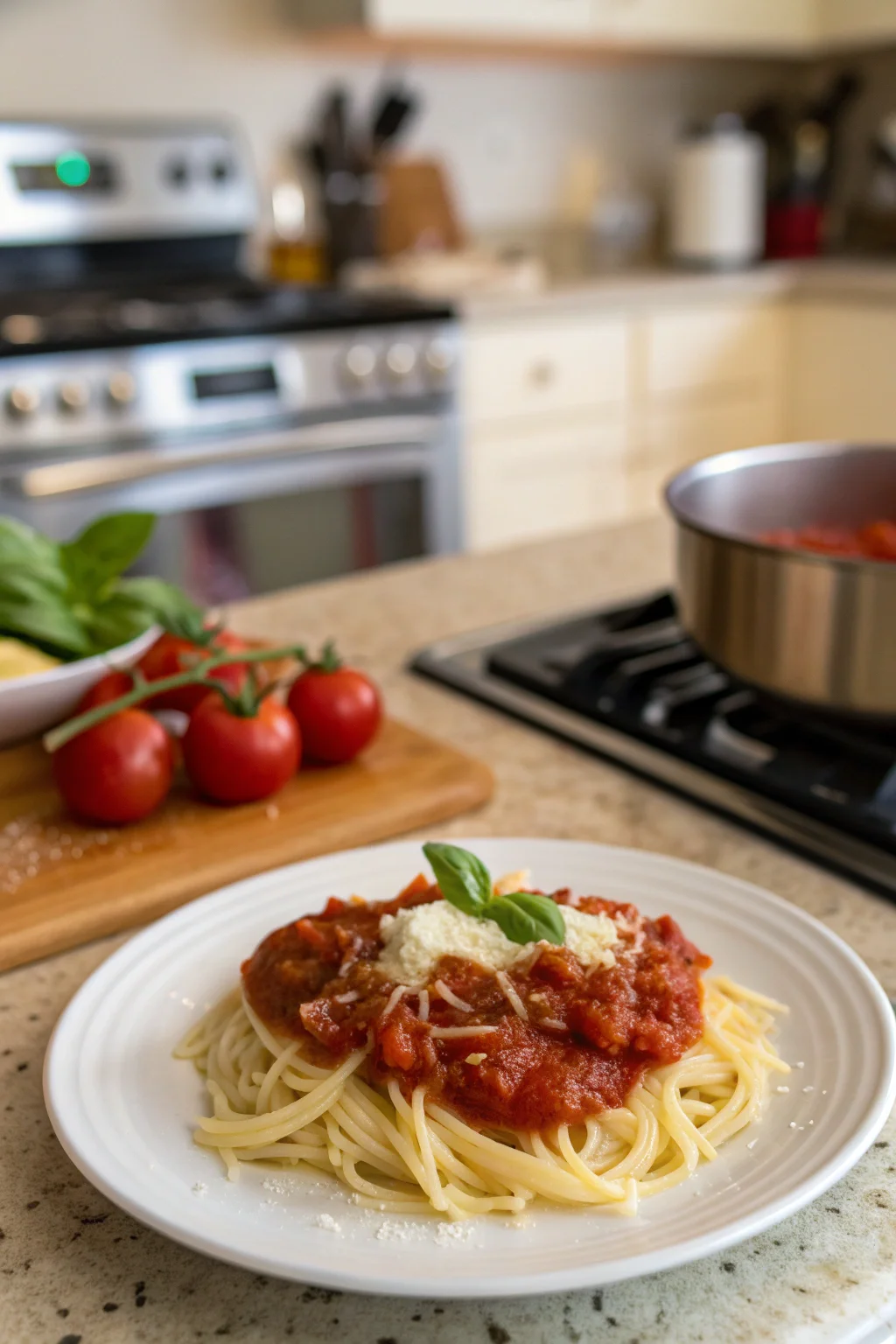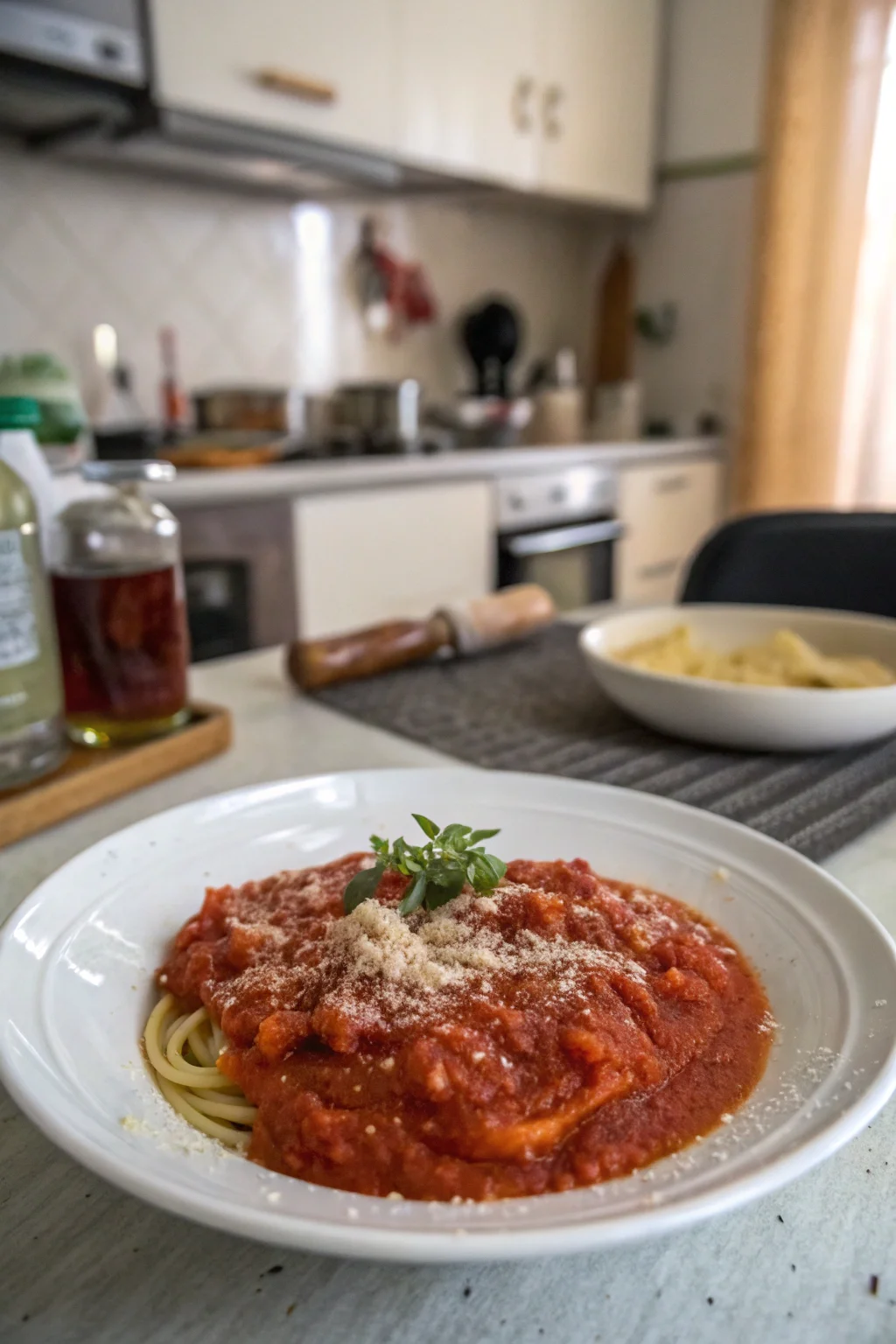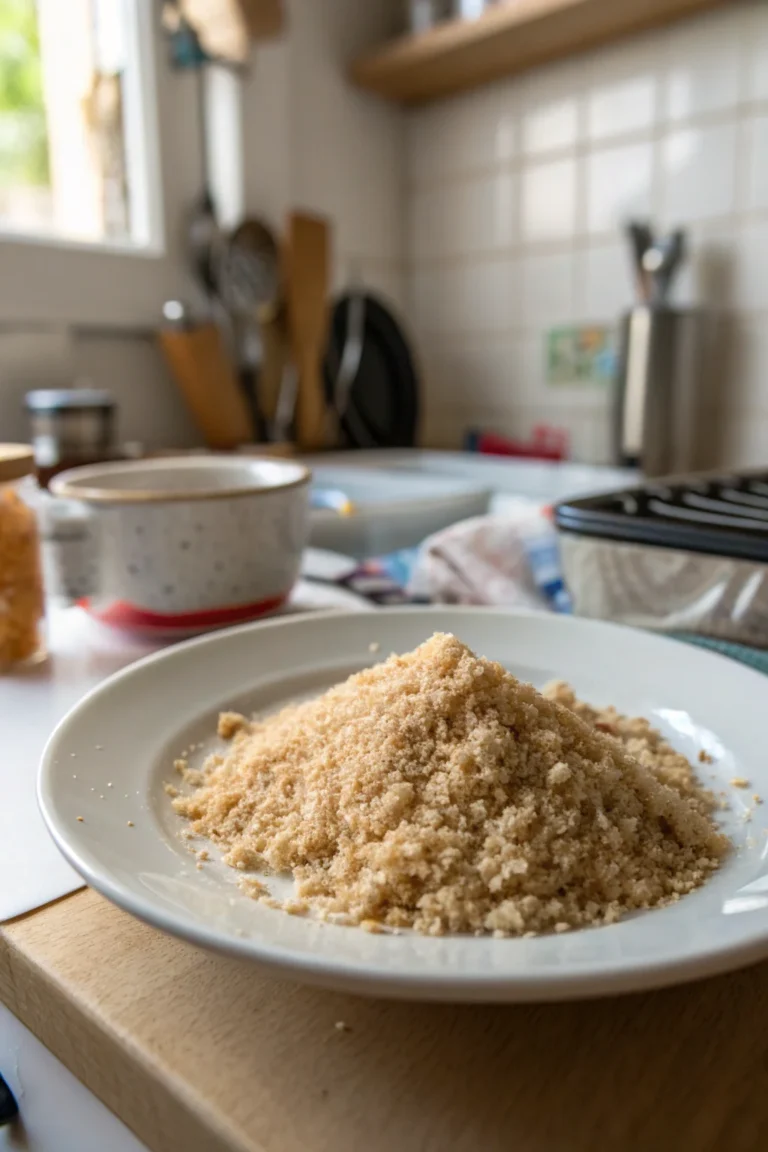What Is the Difference Between Marinara and Tomato Sauce?
If you’ve ever found yourself pondering the differences between marinara and tomato sauce, you’re not alone. Both sauces are staples in Italian and American cuisine, but they serve different culinary purposes. Understanding their unique characteristics can enhance your cooking and help you choose the right sauce for your dish. Whether you’re preparing a quick weeknight meal or an elaborate dinner for friends, knowing the nuances of these sauces can elevate your culinary creations.
Table of Contents
What Ingredients Are Common in Both Marinara and Tomato Sauce?

Both marinara and tomato sauce share a base of tomatoes, making them rich in flavor and nutrients. Common ingredients include:
- Tomatoes: Fresh, canned, or pureed, tomatoes are the heart of both sauces. The choice between fresh or canned can affect the sauce’s taste and texture. Fresh tomatoes offer a bright, lively flavor, while canned tomatoes provide convenience and consistency.
- Olive oil: Adds richness and depth, acting as a carrier for flavors and offering a smooth mouthfeel. High-quality extra virgin olive oil can enhance the sauce’s taste significantly.
- Garlic: Provides a fragrant, savory note that complements the acidity of tomatoes. Sautéing garlic in olive oil before adding tomatoes helps release its essential oils, boosting the sauce’s aroma and flavor.
Though these ingredients are common, each sauce has distinct variations that set them apart. For instance, the type of tomatoes (San Marzano, Roma, or cherry) and the form (whole, diced, or crushed) can influence the final product. Experimenting with different combinations can help you find the perfect base for your preferred sauce.
How Is Marinara Sauce Made?
Marinara sauce is typically a quick-cooking sauce. Its simplicity is its charm, allowing the fresh flavors of the ingredients to shine through. The basic recipe includes:
- Tomatoes: Often crushed or pureed, providing the sauce’s primary texture and body.
- Garlic: Sautéed in olive oil before adding the tomatoes to enhance its flavor and prevent bitterness.
- Herbs: Usually basil and oregano, which add an aromatic depth. Fresh herbs are preferable, but dried herbs can also be used in a pinch.
- Salt and pepper: To taste, balancing the sauce’s acidity and enhancing its natural sweetness.
The preparation involves simmering the ingredients together for about 30 minutes. This brief cooking time allows the tomatoes to retain their bright, fresh flavor. Marinara is known for its vibrant taste and is often used for pasta, pizza, or as a dip. For more pasta inspiration, check out our beginner’s guide to pasta dishes.
One practical tip for enhancing your marinara sauce is to add a splash of red wine or a pinch of sugar if the tomatoes are particularly acidic. This can round out the sauce’s flavor, making it more balanced and enjoyable.
How Is Tomato Sauce Made?
Tomato sauce is more complex than marinara and involves longer cooking times. This extended simmering allows the flavors to meld, resulting in a more robust and hearty sauce. Its ingredients include:
- Tomatoes: Often blended or cooked down to create a smooth, thick texture.
- Vegetables: Such as onions, carrots, and celery, which form a flavor base known as “soffritto” in Italian cooking. These vegetables are typically finely chopped and sautéed until soft, adding sweetness and depth.
- Herbs and spices: May include thyme, bay leaves, and black pepper, each contributing to the sauce’s complexity.
- Meat or stock: Sometimes added for richness. Beef or chicken stock can add depth, while ground meat introduces a hearty, satisfying element.
Tomato sauce is simmered for several hours, allowing flavors to meld and deepen. This sauce is versatile, used in dishes like lasagna or meat-based recipes. Discover more about traditional Italian sauces.
For a richer flavor, consider roasting your tomatoes before adding them to the sauce. Roasting can caramelize the sugars in tomatoes, enhancing their natural sweetness and adding a smoky undertone.
What Flavor Differences Exist Between Marinara and Tomato Sauce?
- Marinara Sauce: Offers a light, tangy taste with a fresh tomato flavor. Its simplicity allows the natural taste of tomatoes and herbs to take center stage.
- Tomato Sauce: Provides a richer, more intricate taste with a smoother texture. The additional vegetables and spices contribute to a layered flavor profile, often with a hint of sweetness from the carrots and a savory depth from the meat or stock.
The flavor of tomato sauce is more robust due to the inclusion of additional vegetables and spices. This complexity makes it ideal for dishes requiring a sauce that can stand up to other strong flavors, such as in a hearty lasagna or a meat-based dish.
Which Sauce Is Healthier?

Both sauces are healthy options, but they have slight differences:
- Marinara Sauce: Lower in calories and fat, as it usually contains fewer ingredients. Its straightforward preparation retains the nutritional benefits of tomatoes, such as lycopene, an antioxidant linked to health benefits like reduced heart disease risk.
- Tomato Sauce: May include more ingredients and potentially more calories, especially if meat or cheese is added. However, the additional vegetables contribute vitamins and minerals, making it a nutrient-dense option.
Both sauces are rich in vitamins A and C. For a healthier choice, opt for homemade versions to control the ingredients. For more on healthy eating, visit Healthline’s guide to healthy sauces.
To maximize health benefits, use whole tomatoes and high-quality olive oil in either sauce. Reducing salt and opting for fresh herbs over dried can also enhance nutritional value.
Can Marinara Sauce Be Used in Place of Tomato Sauce?
Yes, but consider the dish’s flavor profile:
- Marinara: Ideal for lighter dishes like pasta, as it complements without overpowering. Its bright flavor pairs well with delicate seafood or simple vegetable dishes.
- Tomato Sauce: Better suited for hearty, complex dishes like casseroles, where its robust flavor can enhance and blend with other ingredients.
Substituting one for the other will slightly alter the dish’s flavor and texture. Marinara may lack the depth needed for a rich lasagna, whereas tomato sauce might overpower a simple pasta dish intended to showcase a fresh tomato taste.
Is Marinara Sauce Suitable for Pizza?
Absolutely! Marinara sauce is a common choice for pizza due to its simplicity and fresh flavor. It allows the other toppings to shine without overwhelming them. Its bright acidity complements the richness of cheese and the savory notes of meats like pepperoni or sausage. Learn more about making your own pizza at home.
For a unique twist, try adding a sprinkle of chili flakes or a drizzle of balsamic reduction to your marinara before spreading it on pizza. These additions can enhance the sauce’s flavor and add a touch of heat or sweetness.
What Are Some Popular Dishes Using Marinara Sauce?
Marinara sauce is versatile and used in various dishes:
- Pasta: Such as spaghetti or penne, where marinara’s lightness complements the pasta’s texture without overshadowing it.
- Pizza: As a base sauce, providing a fresh backdrop for a variety of toppings.
- Dips: For mozzarella sticks or breadsticks, where its tangy flavor cuts through the richness of cheese and dough.
Its bright flavor enhances many recipes, making it a kitchen staple. For a simple appetizer, consider serving marinara as a dip with freshly baked focaccia or garlic bread, garnished with fresh basil and a sprinkle of Parmesan cheese.
What Are Some Popular Dishes Using Tomato Sauce?
Tomato sauce lends itself to heartier recipes:
- Lasagna: Layers of pasta, cheese, and sauce, where tomato sauce’s depth complements the richness of the cheese and meat.
- Bolognese: A meat-based sauce served with pasta, benefiting from the tomato sauce’s robust flavor that stands up to the hearty meat.
- Stuffed Peppers: Filled with rice, meat, and sauce, where tomato sauce’s complexity enhances the dish’s overall flavor profile.
The deeper flavor of tomato sauce complements these rich dishes well. For an extra touch, consider adding a splash of red wine to your tomato sauce when making Bolognese, or top your stuffed peppers with a sprinkle of Parmesan before baking.
Can You Add Meat to Marinara Sauce?
While traditional marinara is meatless, you can certainly add meat to create a heartier sauce. Ground beef, sausage, or turkey can be browned and simmered with the sauce. This variation is sometimes referred to as a “meat marinara.” Adding meat can transform marinara into a main course sauce, suitable for pairing with thicker pasta shapes like rigatoni or tagliatelle.
To keep the sauce balanced, season the meat well and consider adding a splash of red wine or a pinch of crushed red pepper flakes to enhance the flavors.
How Can You Thicken Tomato Sauce?
If your tomato sauce is too thin, try these methods:
- Simmer uncovered: Allow the sauce to reduce naturally by evaporation, concentrating the flavors and thickening its consistency.
- Add tomato paste: For thickness without altering the flavor significantly, a spoonful of tomato paste can add body to the sauce.
- Mix in a slurry of flour or cornstarch: Combine with water and stir into the sauce, heating until thickened. This method is best for sauces that need to thicken quickly.
These tips will help you achieve the desired consistency without altering the flavor. If you prefer a more natural approach, adding pureed vegetables like carrots or sweet potatoes can also thicken the sauce while adding nutritional benefits.
Are There Any Dairy-Free Options for Tomato Sauce?
Most tomato sauces are naturally dairy-free. However, always check the ingredients if buying pre-made versions, as some may contain butter or cheese for added flavor. Homemade recipes allow you to ensure no dairy is included, making them suitable for vegan and lactose-intolerant diets. For added creaminess without dairy, consider stirring in coconut milk or pureed cashews for a rich, satisfying texture.
Wrap-Up
Understanding the differences between marinara and tomato sauce can enhance your culinary skills and help you make informed choices in the kitchen. While marinara offers a quick, fresh option, tomato sauce provides depth and complexity. Whether you’re making pasta, pizza, or another favorite dish, knowing which sauce to use can elevate your cooking. For more tips and recipes, explore our collection of Italian recipes.
By experimenting with these sauces and tailoring them to your taste, you can bring a touch of Italy into your home, delighting family and friends with your culinary creations. Remember, the key to mastering these sauces lies in the quality of ingredients and the care you take in preparation. Buon appetito!






